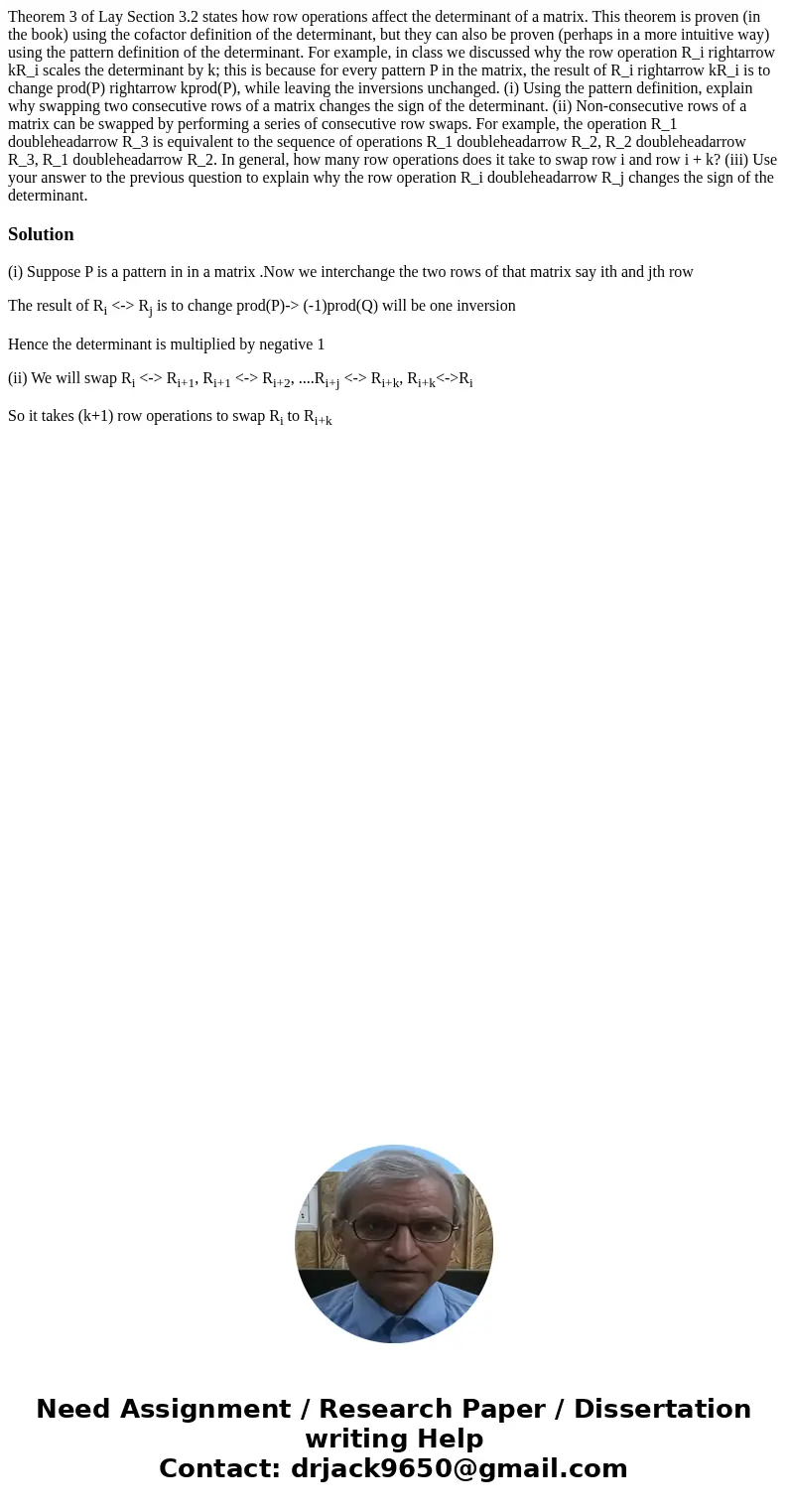Theorem 3 of Lay Section 32 states how row operations affect
Theorem 3 of Lay Section 3.2 states how row operations affect the determinant of a matrix. This theorem is proven (in the book) using the cofactor definition of the determinant, but they can also be proven (perhaps in a more intuitive way) using the pattern definition of the determinant. For example, in class we discussed why the row operation R_i rightarrow kR_i scales the determinant by k; this is because for every pattern P in the matrix, the result of R_i rightarrow kR_i is to change prod(P) rightarrow kprod(P), while leaving the inversions unchanged. (i) Using the pattern definition, explain why swapping two consecutive rows of a matrix changes the sign of the determinant. (ii) Non-consecutive rows of a matrix can be swapped by performing a series of consecutive row swaps. For example, the operation R_1 doubleheadarrow R_3 is equivalent to the sequence of operations R_1 doubleheadarrow R_2, R_2 doubleheadarrow R_3, R_1 doubleheadarrow R_2. In general, how many row operations does it take to swap row i and row i + k? (iii) Use your answer to the previous question to explain why the row operation R_i doubleheadarrow R_j changes the sign of the determinant.
Solution
(i) Suppose P is a pattern in in a matrix .Now we interchange the two rows of that matrix say ith and jth row
The result of Ri <-> Rj is to change prod(P)-> (-1)prod(Q) will be one inversion
Hence the determinant is multiplied by negative 1
(ii) We will swap Ri <-> Ri+1, Ri+1 <-> Ri+2, ....Ri+j <-> Ri+k, Ri+k<->Ri
So it takes (k+1) row operations to swap Ri to Ri+k

 Homework Sourse
Homework Sourse